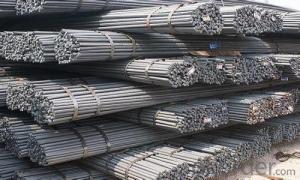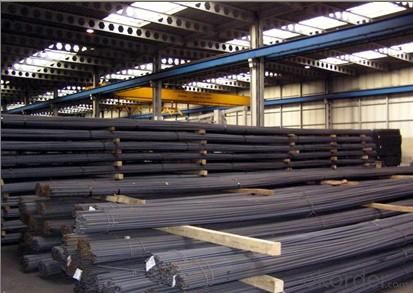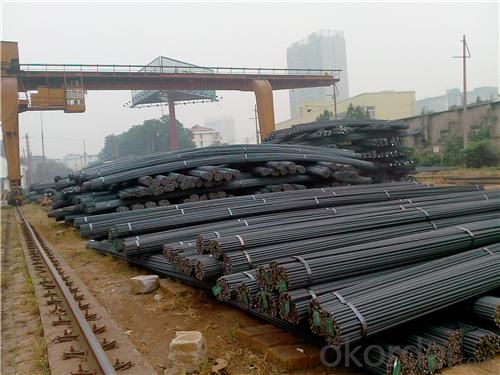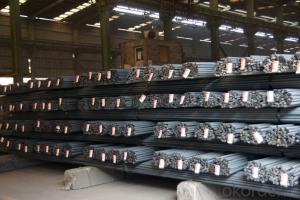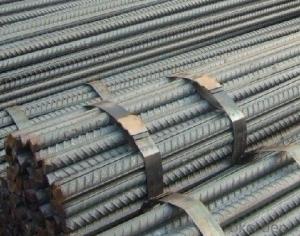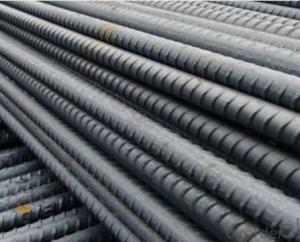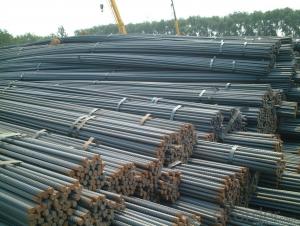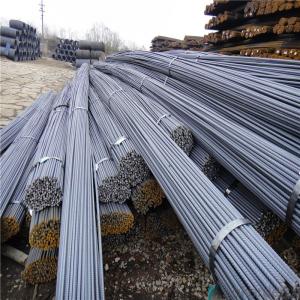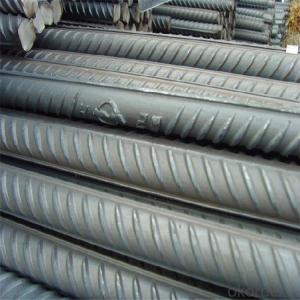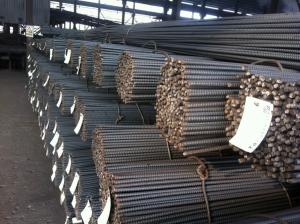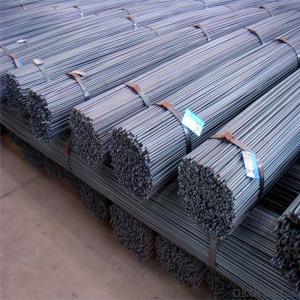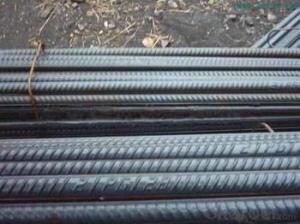HDC stainless deformed steel bar for construction
- Loading Port:
- Tianjin
- Payment Terms:
- TT OR LC
- Min Order Qty:
- 25 m.t.
- Supply Capability:
- 100000 m.t./month
OKorder Service Pledge
OKorder Financial Service
You Might Also Like
Specifications of Construction Steel Round Bar
1. Grade: Q195, Q235, A36, SS400, Q345
2. Material: Mild carbon steel
3. Diameter: 8mm-150mm
4. Length: 6m, 9m, 12m
5. Quenching methods: oil quenching, air cooling or salt bath quenching
6. Heat treatment: Isothermal annealing temperature is 800~880 °C, with 10~20 °C, the furnace cooling to about 600 °C
Usage and Applications of Construction Steel Round Bar
1. Construction steel round bar is mostly used for straight bundles supply, and used for steel, bolts and various mechanical parts. While the bigger round bar, or more than 25mm hot rolled bar, is mainly for the manufacture of mechanical parts or for seamless steel billet.
2. Steel round bar is used in construction and a large number of architectural and engineering structures.
3. Besides, we can supply some especial material steel round bar that can be used for main shaft of steamer, hummer shank, with big section and supper force.
Production Flow of Mild Steel Round Bar
EAF+LF+VD+ Forged+ Heat Treatment
Material prepare (billet) — heat up — rough rolling — precision rolling — cooling — packing — storage and transportation
Quality Assurance of Mild Steel Round Bar
1. We will strictly inspect our production that we sold according to the customer’s request.
2. Our steel reaches international quality standards.
3. Quality should be in conformity with the specification of the manufacturer. Quantity and packing conditions should be in conformity with the term in the contract.
4. Should the packing found damaged, the buyer has the right to claim to the seller.
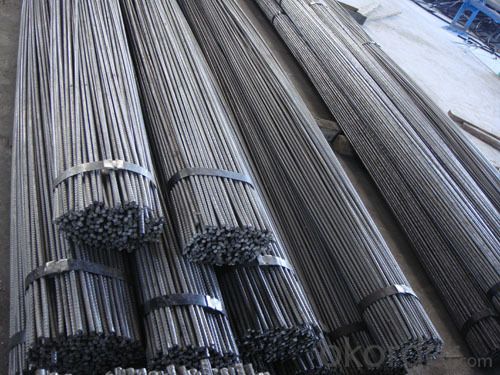
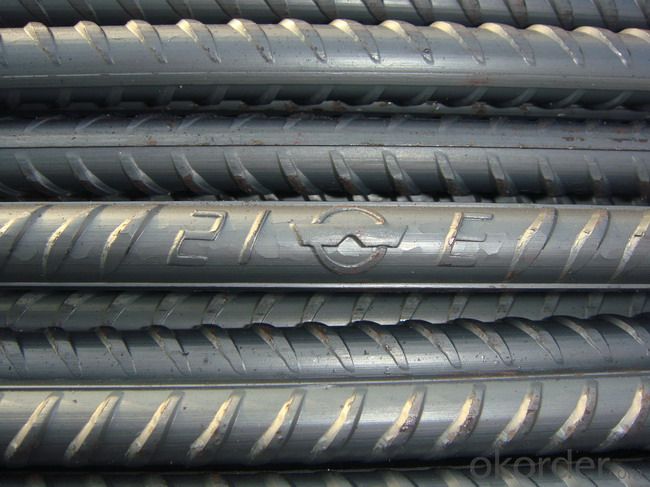
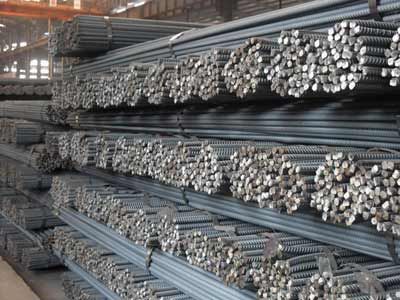
- Q: What are the factors that can affect the lifespan of steel rebars in concrete structures?
- There are several factors that can affect the lifespan of steel rebars in concrete structures. Firstly, the quality and composition of the concrete used in the structure play a significant role. If the concrete is of poor quality or contains harmful chemicals, it can cause corrosion of the steel rebars, leading to a shorter lifespan. Adequate measures should be taken during the construction process to ensure the concrete mixture is properly proportioned and cured. Secondly, the exposure conditions that the concrete structure is subjected to can greatly impact the lifespan of steel rebars. Factors such as humidity, temperature variations, and the presence of aggressive substances like chloride ions or carbon dioxide can accelerate the corrosion process. Structures located in coastal areas or industrial environments are particularly vulnerable due to the high salt content in the air or the presence of pollutants. Thirdly, the design and construction practices employed have a significant impact on the longevity of steel rebars. Proper cover thickness, which refers to the distance between the surface of the rebar and the outer face of the concrete, is crucial. Inadequate cover thickness can lead to insufficient protection against corrosion. Additionally, the design should incorporate effective drainage systems to prevent the accumulation of water around the rebars, as stagnant moisture can accelerate corrosion. Furthermore, maintenance practices also play a role in the longevity of steel rebars. Regular inspections, cleaning, and repairs can help identify and address any issues before they become severe. Applying protective coatings or using corrosion inhibitors can also extend the lifespan of the rebars. Lastly, the type and quality of the steel rebars themselves are important factors. Rebars with higher levels of carbon and alloying elements are generally more resistant to corrosion. Additionally, the quality of the manufacturing process and the presence of any impurities can affect the rebars' durability. In conclusion, the lifespan of steel rebars in concrete structures can be influenced by various factors including the quality of the concrete, exposure conditions, design and construction practices, maintenance, and the quality of the rebars themselves. Proper attention to these factors can help ensure the longevity and structural integrity of concrete structures.
- Q: Can steel rebars be used in reinforced masonry construction?
- Yes, steel rebars can be used in reinforced masonry construction. They are commonly used to strengthen and reinforce the masonry walls, providing additional strength and resistance to cracking or structural failure. The rebars are typically embedded within the masonry mortar joints or placed vertically within the cells of concrete masonry units to enhance the overall structural integrity of the construction.
- Q: Can steel rebars be used in structures with high resistance to vibration?
- Structures with high resistance to vibration can indeed make use of steel rebars. These rebars are frequently employed as reinforcements in concrete structures to enhance their durability and strength. The inclusion of steel rebars bolsters the structural integrity of buildings and infrastructure, rendering them more impervious to a range of forces, including vibrations. Steel rebars possess exceptional tensile strength and stiffness, enabling them to evenly distribute and absorb applied loads throughout the structure. This characteristic helps to minimize concentrated stress points that may trigger vibrations or structural failure. Moreover, steel rebars are effective in controlling crack widths and preventing crack propagation, which further fortifies the structure against vibrations. Furthermore, steel rebars can be tailored to meet specific requirements based on projected vibration levels. By utilizing rebars with suitable diameters, spacing, and anchorage details, structures can be engineered to withstand vibrations caused by various external factors, such as earthquakes, wind loads, or nearby machinery. It is of utmost importance to ensure proper design and detailing of steel rebars in structures with high resistance to vibration. The layout of reinforcements must be meticulously planned to account for anticipated forces and vibrations. Additionally, the rebars should be adequately anchored and connected to other structural components to maintain their efficacy in combatting vibrations. All in all, when designed and implemented correctly, steel rebars serve as a dependable and widely-used reinforcement material that significantly enhances the resistance of structures to vibrations.
- Q: What are the advantages of using steel rebars over other materials?
- There are several advantages of using steel rebars over other materials. Firstly, steel rebars have high tensile strength, which makes them ideal for reinforcing concrete structures and withstanding heavy loads. Secondly, steel rebars have excellent durability and can resist corrosion and weathering, ensuring the longevity of the reinforced structure. Additionally, steel rebars provide flexibility in design as they can be easily shaped and bent into various configurations to meet specific project requirements. Lastly, steel rebars are widely available and cost-effective, making them a preferred choice for construction projects worldwide.
- Q: How do steel rebars contribute to the energy efficiency of a building?
- Steel rebars contribute to the energy efficiency of a building by enhancing its structural integrity and durability. By reinforcing concrete structures, such as walls, columns, and beams, steel rebars help distribute and withstand the loads imposed on the building. This reduces the risk of structural failure and allows for the use of thinner concrete sections, which in turn saves on material and reduces the overall weight of the building. Consequently, the lighter building requires less energy for construction and transportation, and also decreases the demand on heating, cooling, and lighting systems, resulting in improved energy efficiency.
- Q: Can steel rebars be used in power plant construction?
- Yes, steel rebars can be used in power plant construction. Steel rebars are commonly used as reinforcement in concrete structures, including power plants, to enhance their strength and durability.
- Q: Can steel rebars be used in the construction of underground tunnels?
- Yes, steel rebars can be used in the construction of underground tunnels. Steel rebars are commonly used in tunnel construction to reinforce the concrete structures and provide additional strength and durability to withstand the underground conditions. The rebars are embedded within the concrete walls or floors of the tunnels, enhancing their structural integrity and ensuring the safety of the tunnel.
- Q: Can steel rebars be bent or shaped on-site?
- Yes, steel rebars can be bent or shaped on-site using specialized tools and equipment such as rebar benders and rebar cutters. This allows for flexibility in construction projects to meet specific design requirements and ensure proper reinforcement placement.
- Q: Are steel rebars recyclable?
- Yes, steel rebars are recyclable. Steel is a highly recyclable material, and steel rebars can be easily melted down and reprocessed to be used in the production of new steel products. Recycling steel rebars not only helps conserve natural resources but also reduces the environmental impact associated with the extraction and manufacturing of new steel.
- Q: What is the average lifespan of steel rebars in concrete structures?
- The lifespan of steel rebars in concrete structures can vary based on multiple factors. Typically, if the concrete is of good quality and maintained properly, rebars can endure for numerous decades. However, the corrosion process can be expedited by exposure to environmental conditions, including moisture, chemicals, and temperature fluctuations, resulting in a shorter lifespan. In regions with high humidity or close proximity to saltwater, rebars may corrode at a faster rate. Furthermore, inadequate concrete cover or improper placement of rebars, as a result of poor construction practices, can also impact their longevity. Regular maintenance and inspections can aid in identifying potential issues and prolonging the lifespan of steel rebars in concrete structures.
Send your message to us
HDC stainless deformed steel bar for construction
- Loading Port:
- Tianjin
- Payment Terms:
- TT OR LC
- Min Order Qty:
- 25 m.t.
- Supply Capability:
- 100000 m.t./month
OKorder Service Pledge
OKorder Financial Service
Similar products
Hot products
Hot Searches
Related keywords
